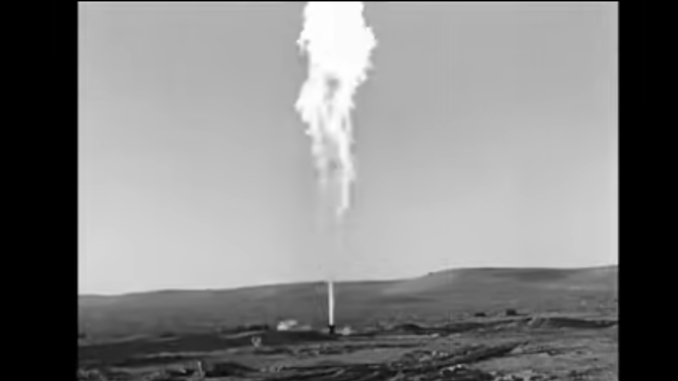
Urta-Bulak is a huge natural gas field that lies near the Turkmenistan border in southern Uzbekistan. This vast desert region is sparsely populated: for many local nomadic inhabitants, life hadn’t changed much for centuries. Shepherds tended to their flocks of grazing animals. The ancient city of Bukhara, 90 kilometers (56 miles) to the north, an architectural jewel along the fabled Silk Road, features hundreds of ornate structures dating as far back as the ninth century through the seventeenth century. Except for the twentieth century pursuit of fossil fuels, time had stood still here while global powers competed to be the first to step foot on the moon.
On the 1st of December, 1963, well number 11, under tremendous pressure from subterranean gasses that drillers had tapped into, suffered a blowout. At great velocity, gas shot out of the ground, ignited, exploded, and remained ablaze for over a thousand days and nights. Twelve million cubic meters of gas escaped every single day, more than enough to satisfy the needs of a city as large as Leningrad. Soviet government authorities blamed the accident on a “violation of drilling procedures” by drilling rig workers. Every effort was made to try to cap the inferno, by every conventional technique possible. All failed. At least one attempt made matters worse, causing toxic gasses to bubble up out of the earth all around the well, often at some distance from the burning wellhead, causing concern for the safety of the local people and their livestock. The closest permanent settlement was a small village roughly 27 km (18 mi) from well eleven.
Out of conventional options, the unconvential became the only choice. A “killing well” would be drilled about 150 meters from number 11, and a diagonal shaft would be drilled 1,532 meters (5,026 feet) deep. Into the killing well they lowered a 30 kiloton nuclear weapon to blow the faulty shaft closed. On 30 September 1966, the weapon was detonated, permanently sealing well number 11. After burning out of control for nearly three years, the blaze was finally out and the natural gas that had been spewing from it was no longer polluting the atmosphere.
Now that you’ve read the story, you must see the movie. The following two Soviet documentary videos about the 1963 Urta-Bulak blowout are actually one in the same. The first one is merely a greatly abbreviated version of the second. You can watch the first to get the gist of the story, or watch the second if you find the subject utterly fascinating (as I did.) Note that when the narrator refers to “well-logging trucks”, he must have meant well-drilling trucks (something was lost in translation). In other instances “logging” may be referring to the process of drilling or collecting data from well operations, not the harvesting of trees (I’m only going out on a limb on this because it’s a desert). Both videos have English subtitles and are configured to automatically display them. However, there’s something wrong with the second video – it’s broken – so you’ll need to manually start subtitles by tapping on the three vertical dots in the lower right corner, then tap ‘captions off’ to turn the captions on (it’s counterintuitive!) and finally, tap ‘English’.
USSR DETONATED A NUCLEAR BOMB TO PUT OUT A BURNING GAS WELL (1:37)
“Soviets put out a burning gas well with a nuclear explosion (1966)” (19:04)
Question Of The Night: Which is the better song: “California Girls” (1965) by The Beach Boys, or “Back In The USSR” (1968) by The Beatles?
